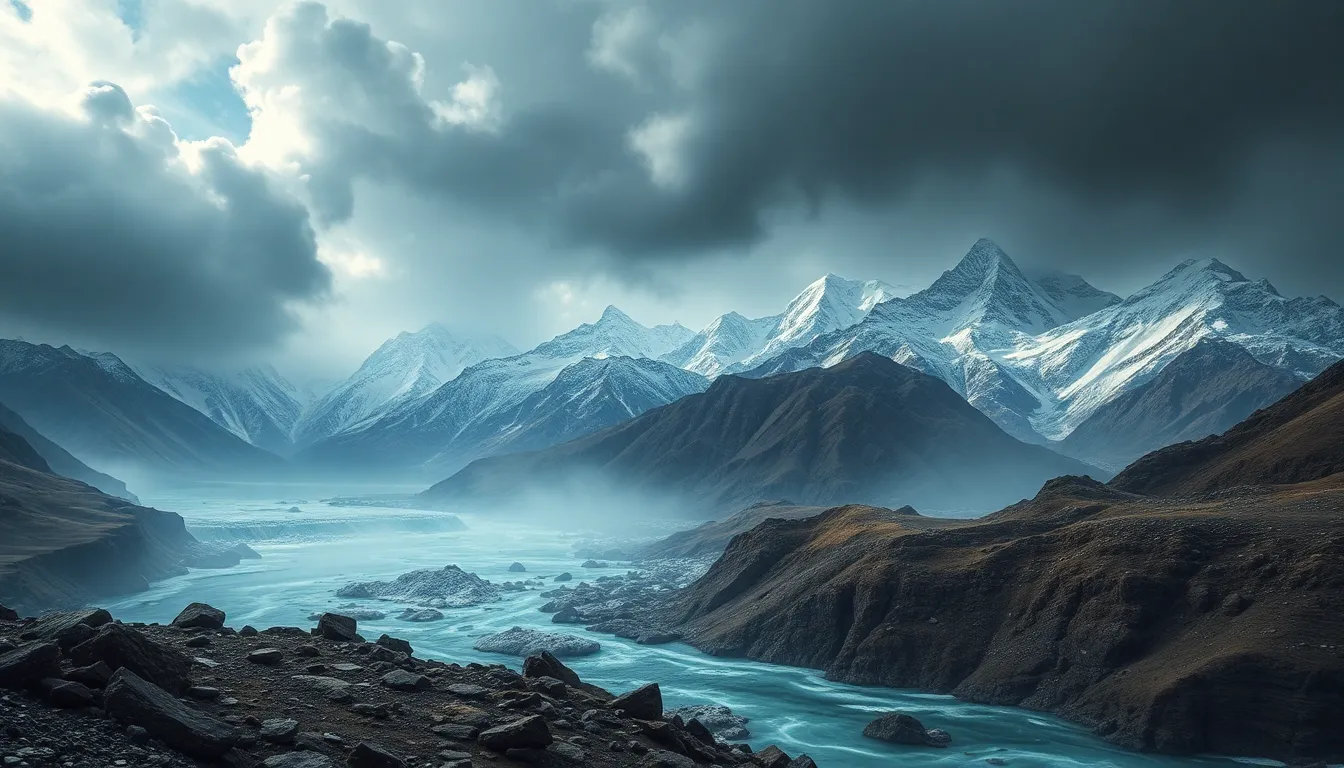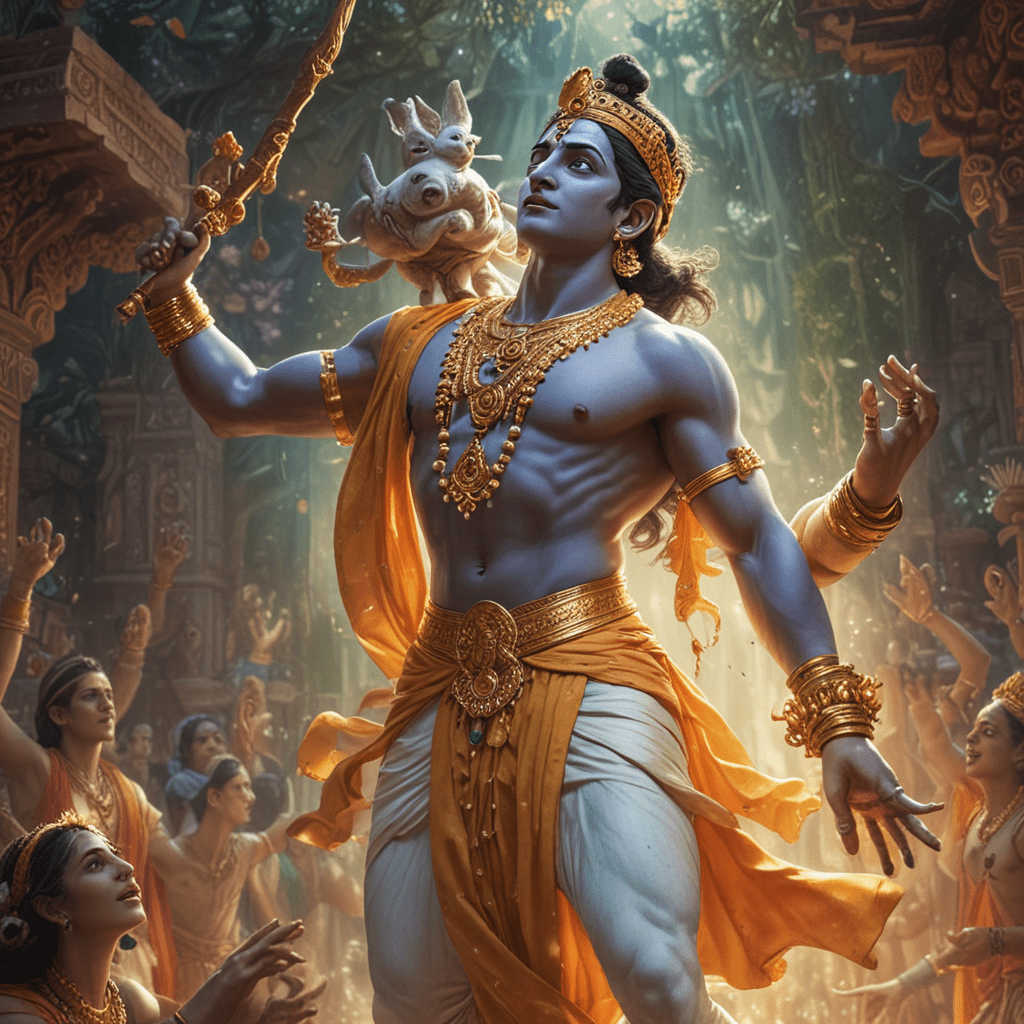The Flood Myths of the Himalayas: Tales from the Roof of the World
1. Introduction to the Himalayas and Their Cultural Significance
The Himalayas, often referred to as the “Roof of the World,” stretch across five countries: India, Nepal, Bhutan, China, and Pakistan. This majestic mountain range not only boasts the highest peaks on Earth, including Mount Everest, but also serves as a cradle of diverse cultures and traditions. The region is home to various ethnic groups, each possessing its own unique history, language, and mythologies.
In Himalayan cultures, myths and folklore play a crucial role in shaping identity and understanding the world. These narratives often encapsulate moral lessons, cultural values, and explanations of natural phenomena, including the powerful imagery of floods. As such, flood myths are a significant aspect of Himalayan folklore, reflecting the interplay between nature and human existence.
2. Understanding Flood Myths: A Universal Motif
Flood myths are a common motif found in cultures around the world. Defined as stories that involve a great deluge, these myths often symbolize destruction and rebirth. They serve as cautionary tales about the dangers of human hubris and the overwhelming power of nature.
Characteristics of flood myths typically include:
- A great flood that wipes out humanity or a significant portion of it.
- A chosen individual or group who survives, often through divine intervention.
- Rebirth or renewal after the flood, leading to a new beginning for humanity.
The role of nature in shaping these narratives is profound, as floods frequently reflect historical events or natural disasters experienced by communities. In the Himalayas, where monsoons can lead to devastating floods, the creation of such myths can be seen as both a response to environmental realities and a means of processing collective trauma.
3. The Great Flood in Hindu Mythology
One of the most well-known flood myths in the Himalayas is found in Hindu mythology, specifically the story of Manu and the fish, known as Matsya. According to this narrative, Manu, the first man, was warned by a divine fish about an impending flood that would destroy the world.
The fish, which was an incarnation of the god Vishnu, instructed Manu to build a large boat and gather seeds of all plants and the seven great sages. As the floodwaters rose, Manu and his companions survived, ultimately leading to the repopulation of the Earth after the waters receded.
This story is rich in symbolism, representing themes of survival, morality, and the cyclical nature of life. It emphasizes the importance of heeding divine warnings and illustrates the connection between humanity and the divine.
4. Buddhist Perspectives on Flood Myths
Buddhism, which also has deep roots in the Himalayan region, presents its own interpretations of flood myths. In certain Buddhist texts, there are references to great floods that serve as metaphors for the overwhelming nature of desire and attachment.
In comparing Hindu and Buddhist flood stories, one can observe differing emphases: while Hindu narratives often focus on divine intervention and moral lessons, Buddhist accounts may highlight the internal struggles of individuals against the floods of desire and ignorance.
5. Regional Variations: Flood Myths Across Himalayan Cultures
The diverse ethnic groups inhabiting the Himalayas have their own unique flood myths, reflecting their distinct cultural identities. Some notable examples include:
- Sherpa: In Sherpa mythology, the flood is often associated with the wrath of deities, where humans must appease the gods to avoid destruction.
- Ladakhi: In Ladakh, stories of floods often involve local heroes who save their communities, emphasizing the importance of bravery and resourcefulness.
- Tibetan: Tibetan narratives may incorporate the teachings of the Buddha, using floods as allegories for the obstacles faced on the path to enlightenment.
6. Environmental Reflections: Flood Myths and Natural Disasters
The creation of flood myths in the Himalayas is closely linked to historical flooding events and environmental changes. Many communities have experienced catastrophic floods due to glacial melt, landslides, and monsoon rains. These experiences shape the collective memory of communities, leading to the development of narratives that explain and contextualize these disasters.
Furthermore, these myths often serve as warnings to future generations, urging them to respect nature and understand its powerful forces. The interconnection between myth and environmental reality highlights the importance of preserving these stories as they offer valuable insights into the relationship between humans and their environment.
7. The Role of Deities and Spirits in Flood Myths
Divine figures and spirits play pivotal roles in the flood myths of the Himalayas. In Hindu mythology, deities like Vishnu are central to the narrative of survival and rebirth. Similarly, in Buddhist traditions, various bodhisattvas might be invoked in times of crisis.
The cultural significance of these deities extends beyond mere storylines; they embody the values and beliefs of the communities. These figures often symbolize protection, guidance, and the moral imperatives that societies strive to uphold.
8. Modern Interpretations and Relevance of Flood Myths
In contemporary Himalayan societies, flood myths continue to resonate, albeit with new interpretations. As globalization influences cultural practices, traditional narratives are often adapted to fit modern contexts. This evolution can lead to a greater appreciation of these stories as they are used to address current environmental issues, such as climate change and natural disasters.
Additionally, younger generations are finding ways to connect these ancient tales with modern values, emphasizing themes of resilience and environmental stewardship.
9. Flood Myths in Literature and Art
The influence of flood myths extends into literature and art, where they serve as rich sources of inspiration. Writers and artists draw on these narratives to explore themes of survival, renewal, and the human condition.
Examples of modern adaptations include:
- Novels that reimagine ancient flood stories in contemporary settings, highlighting environmental crises.
- Artworks that depict flood myths through various mediums, illustrating the emotional and spiritual responses to such events.
- Films and documentaries that explore the cultural significance of these myths, bringing them to a global audience.
10. Conclusion: The Enduring Legacy of Himalayan Flood Myths
In conclusion, the flood myths of the Himalayas offer profound insights into the cultural and environmental landscapes of the region. Through stories of survival, divine intervention, and the cyclical nature of life, these narratives reflect the experiences and values of diverse communities.
Preserving these tales is essential for future generations, as they not only provide a connection to the past but also serve as a guide for navigating contemporary challenges. The enduring legacy of Himalayan flood myths lies in their ability to resonate across time, reminding us of the intricate bond between humanity and the natural world.



